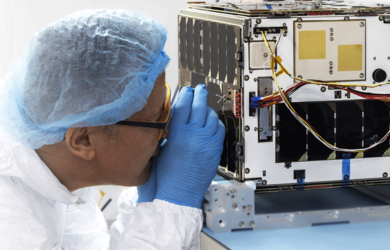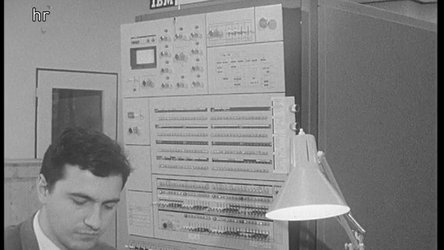Accept all cookies Accept only essential cookies See our Cookie Notice

About ESA
The European Space Agency (ESA) is Europe’s gateway to space. Its mission is to shape the development of Europe’s space capability and ensure that investment in space continues to deliver benefits to the citizens of Europe and the world.
Highlights
ESA - United space in Europe
This is ESA ESA facts Member States & Cooperating States Funding Director General Top management For Member State Delegations European vision European Space Policy ESA & EU Space Councils Responsibility & Sustainability Annual Report Calendar of meetings Corporate newsEstablishments & sites
ESA Headquarters ESA ESTEC ESA ESOC ESA ESRIN ESA EAC ESA ESAC Europe's Spaceport ESA ESEC ESA ECSAT Brussels Office Washington OfficeWorking with ESA
Business with ESA ESA Commercialisation Gateway Law at ESA Careers Cyber resilience at ESA IT at ESA Newsroom Partnerships Merchandising Licence Education Open Space Innovation Platform Integrity and Reporting Administrative Tribunal Health and SafetyMore about ESA
History ESA Historical Archives Exhibitions Publications Art & Culture ESA Merchandise Kids Diversity ESA Brand CentreLatest
Space in Member States
Find out more about space activities in our 23 Member States, and understand how ESA works together with their national agencies, institutions and organisations.
Science & Exploration
Exploring our Solar System and unlocking the secrets of the Universe
Go to topicAstronauts
Missions
Juice Euclid Webb Solar Orbiter BepiColombo Gaia ExoMars Cheops Exoplanet missions More missionsActivities
International Space Station Orion service module Gateway Concordia Caves & Pangaea BenefitsLatest
Space Safety
Protecting life and infrastructure on Earth and in orbit
Go to topicAsteroids
Asteroids and Planetary Defence Asteroid danger explained Flyeye telescope: asteroid detection Hera mission: asteroid deflection Near-Earth Object Coordination CentreSpace junk
About space debris Space debris by the numbers Space Environment Report In space refuelling, refurbishing and removingSafety from space
Clean Space ecodesign Zero Debris Technologies Space for Earth Supporting Sustainable DevelopmentLatest
Applications
Using space to benefit citizens and meet future challenges on Earth
Go to topicObserving the Earth
Observing the Earth Future EO Copernicus Meteorology Space for our climate Satellite missionsCommercialisation
ESA Commercialisation Gateway Open Space Innovation Platform Business Incubation ESA Space SolutionsLatest
Enabling & Support
Making space accessible and developing the technologies for the future
Go to topicBuilding missions
Space Engineering and Technology Test centre Laboratories Concurrent Design Facility Preparing for the future Shaping the Future Discovery and Preparation Advanced Concepts TeamSpace transportation
Space Transportation Ariane Vega Space Rider Future space transportation Boost! Europe's Spaceport Launches from Europe's Spaceport from 2012Latest

First Images Received from MANTIS missions using GSTP computer
Thank you for liking
You have already liked this page, you can only like it once!
On Monday 20th November the first images were received from the MANTIS mission, which hosts an onboard computer developed through GSTP Element 1.
The computer has been designed through two separate contracts between GSTP and Open Cosmos in the UK. The first saw the development of the electronic parts needed to build the computer, while a follow on iterated the computer, its casing and the thermal control unit.
The first contract was straightforward, the design was clear and building the computer fairly straightforward. The challenges came with the second contract, which began to look at more detailed aspects of the design, such as improving the ability to withstand radiation.
“As with many things, the first push saw 80 per cent of the work done fairly quickly,” explains Nicola Melega, the technical officer in charge of the activity. “It’s the last 20 per cent that takes time and a critical eye to make sure everything is working properly.”
MANTIS, short for Mission Agile Nanosatellite for Terrestrial Imagery Services, isn’t the only mission using the GSTP-developed computer. Two of the units will also be integrated into ɸ-sat-2, pronounced Phi-Sat-2, a 6U CubeSat which will use one as a main computer, taking care of the spacecraft’s operations like attitude control and deorbiting. A second computer will act purely for the payload, preprocessing the data before sending it to an AI computational unit. The payload computer, together with the AI unit together form the payload data collection and processing system for the spacecraft.
MANTIS was the first satellite launched under ESA InCubed, a co-funding program run by ESA Φ-lab. It is mainly dedicated to Earth Observation, taking images that can be used for monitoring oil and gas spills and leaks.
-
CREDIT
ESA -
LICENCE
ESA Standard Licence

MANTIS under inspection

MANTIS mission patch

MANTIS key facts

First computer















 Germany
Germany
 Austria
Austria
 Belgium
Belgium
 Denmark
Denmark
 Spain
Spain
 Estonia
Estonia
 Finland
Finland
 France
France
 Greece
Greece
 Hungary
Hungary
 Ireland
Ireland
 Italy
Italy
 Luxembourg
Luxembourg
 Norway
Norway
 The Netherlands
The Netherlands
 Poland
Poland
 Portugal
Portugal
 Czechia
Czechia
 Romania
Romania
 United Kingdom
United Kingdom
 Slovenia
Slovenia
 Sweden
Sweden
 Switzerland
Switzerland
























